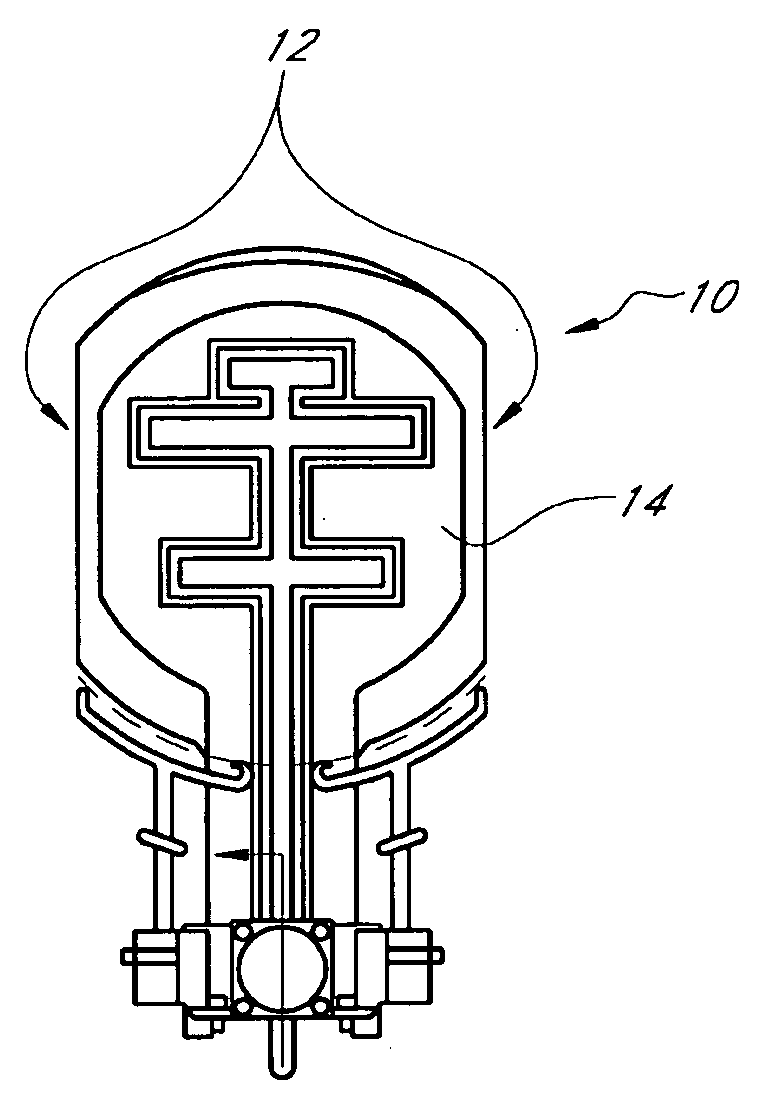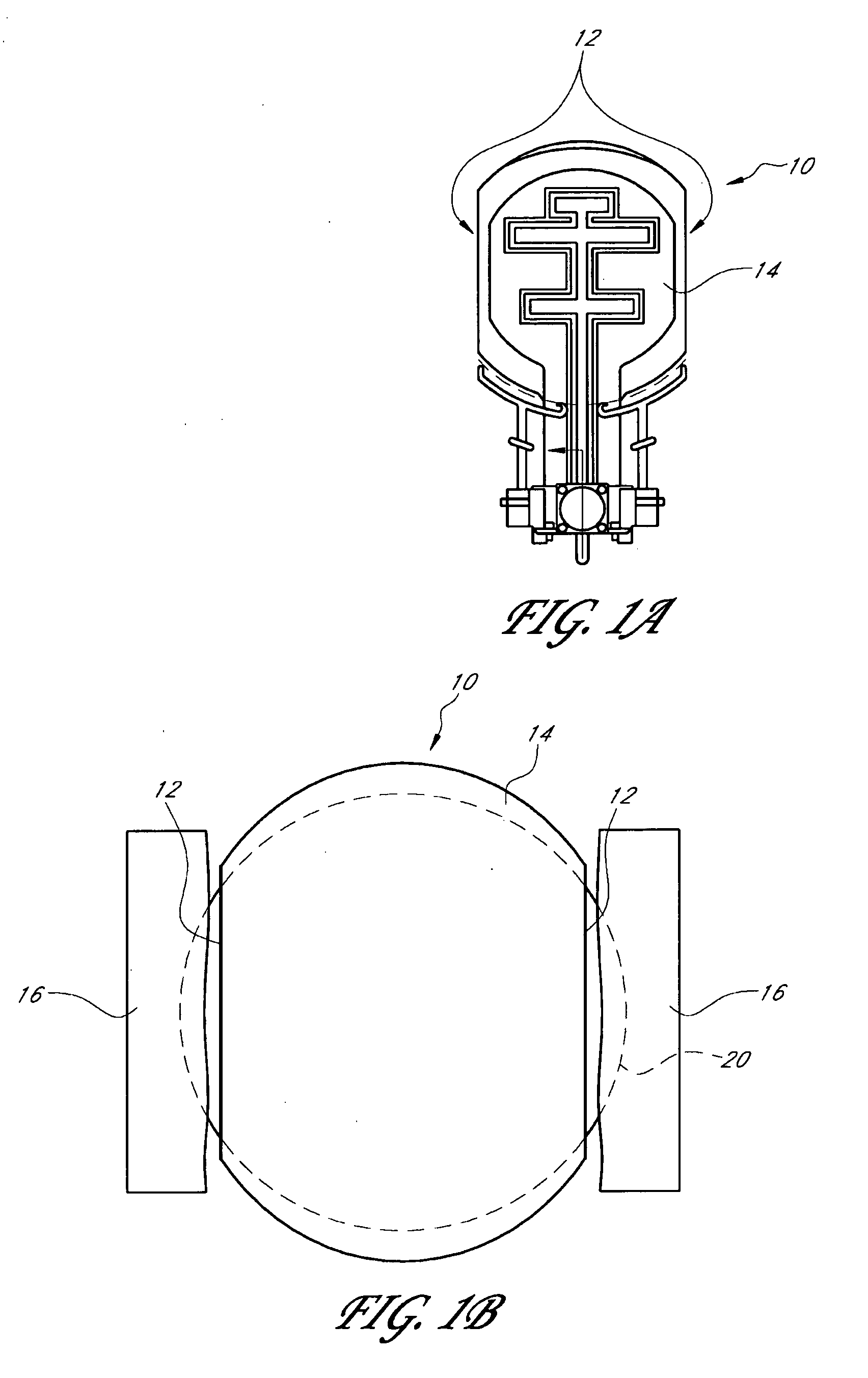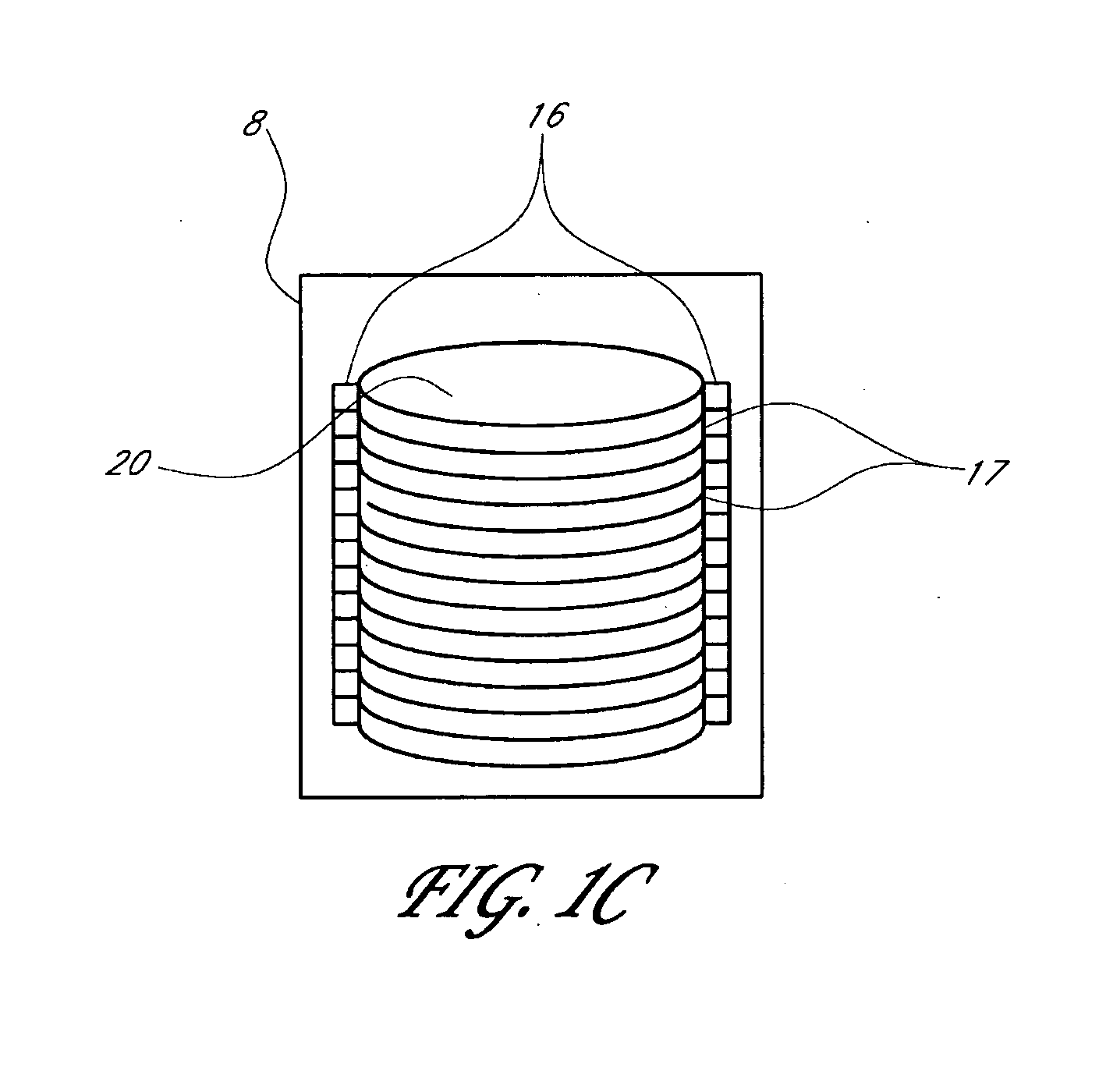Bernoulli wand
a technology of bernoulli wand and bernoulli, which is applied in the direction of manipulators, gripping heads, loading/unloading, etc., can solve the problems of wafer curl, wafer upward “lifting” force, and particularly problematic curl, so as to minimize contact damage to the wafer
- Summary
- Abstract
- Description
- Claims
- Application Information
AI Technical Summary
Benefits of technology
Problems solved by technology
Method used
Image
Examples
Embodiment Construction
[0022]The following detailed description of the preferred embodiments and methods presents a description of certain specific embodiments to assist in understanding the claims. However, one may practice the present invention in a multitude of different embodiments and methods as defined and covered by the claims.
[0023]Referring more specifically to the drawings for illustrative purposes, the present invention is embodied in the devices generally shown in the Figures. It will be appreciated that the apparatuses may vary as to configuration and as to details of the parts, and that the methods may vary as to the specific steps and sequence, without departing from the basic concepts as disclosed herein.
[0024]The improved wafer transport system described hereinbelow includes a modified Bernoulli wand made of a transparent material for high temperature processing that minimizes the curling problem associated with the wands described above, especially in ultra-thin 200 mm or smaller wafers....
PUM
 Login to View More
Login to View More Abstract
Description
Claims
Application Information
 Login to View More
Login to View More - R&D
- Intellectual Property
- Life Sciences
- Materials
- Tech Scout
- Unparalleled Data Quality
- Higher Quality Content
- 60% Fewer Hallucinations
Browse by: Latest US Patents, China's latest patents, Technical Efficacy Thesaurus, Application Domain, Technology Topic, Popular Technical Reports.
© 2025 PatSnap. All rights reserved.Legal|Privacy policy|Modern Slavery Act Transparency Statement|Sitemap|About US| Contact US: help@patsnap.com



